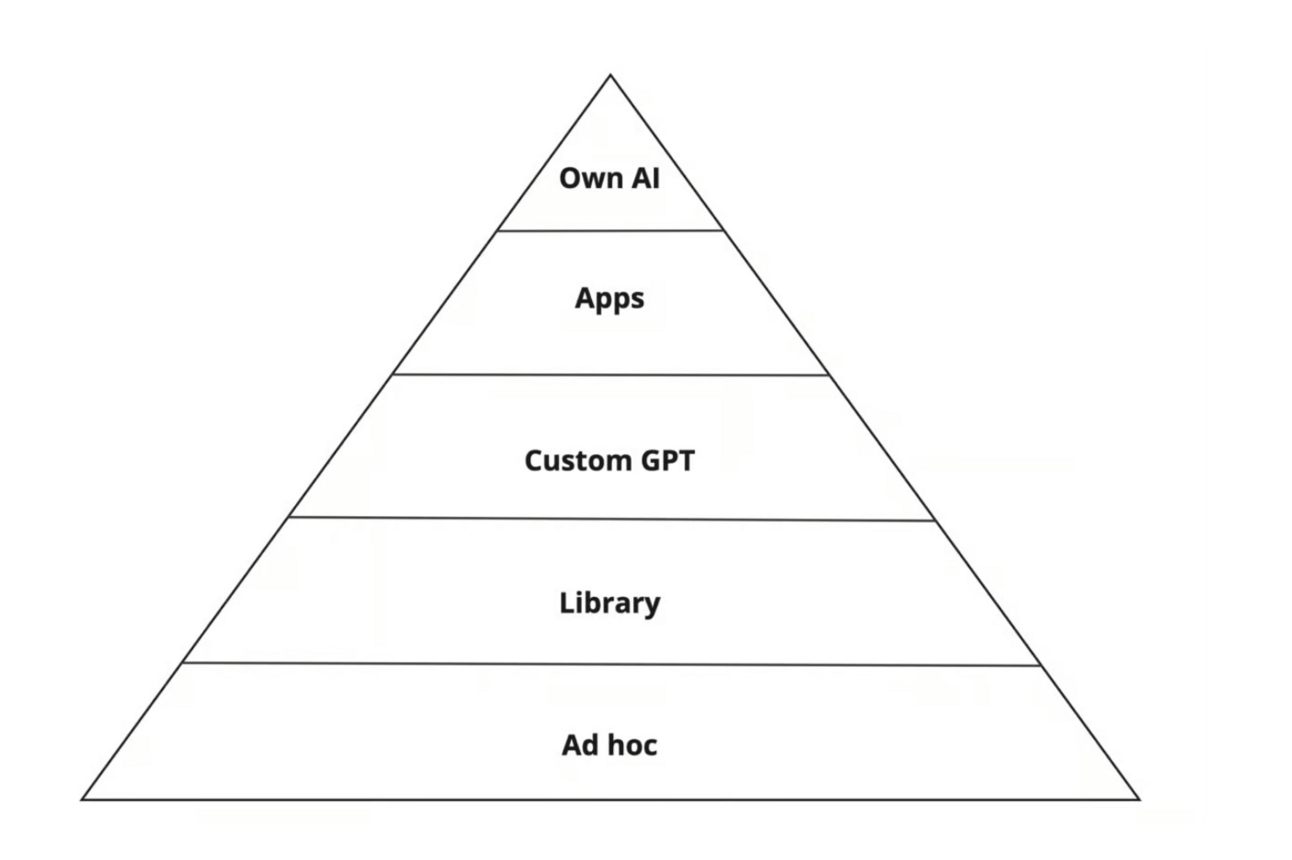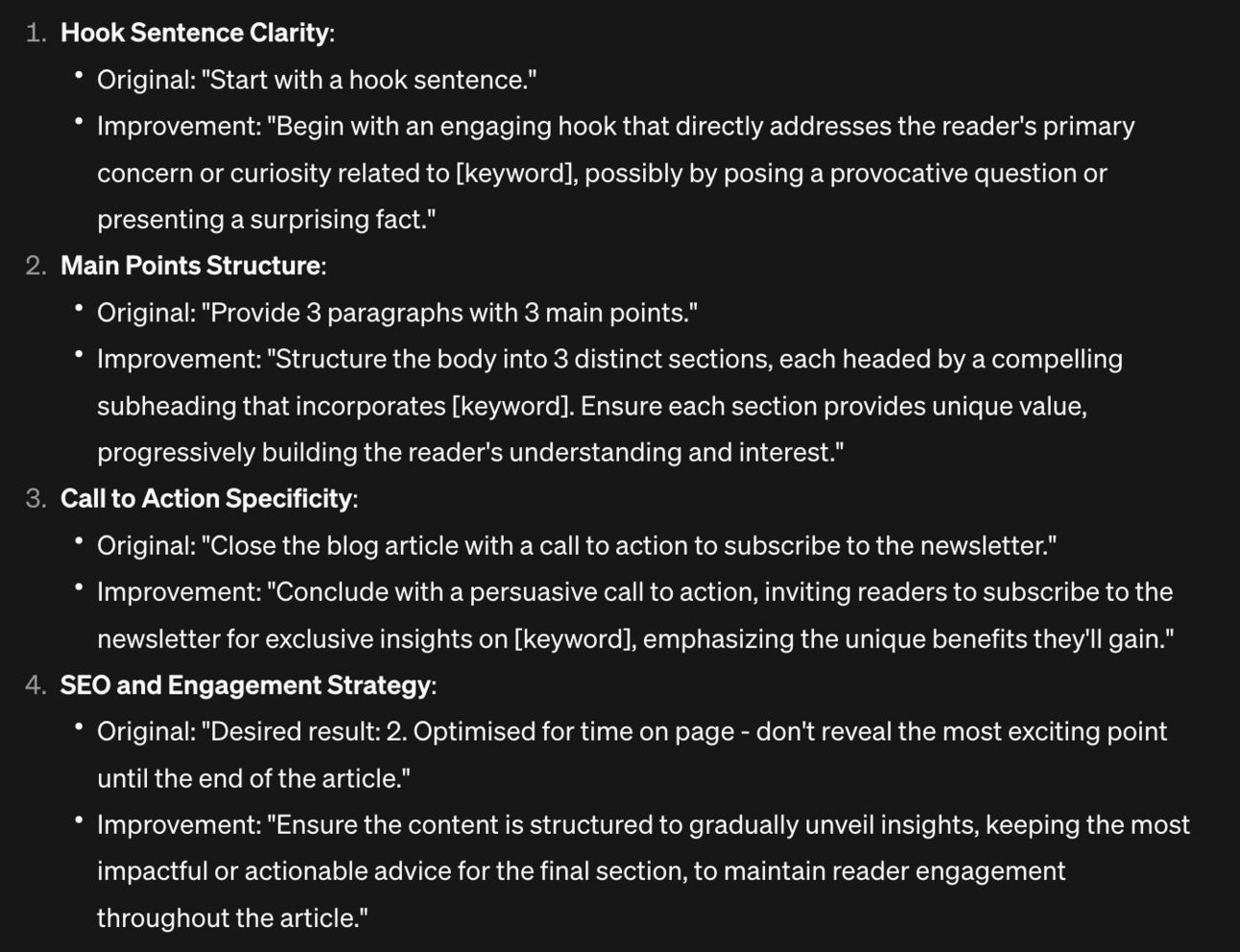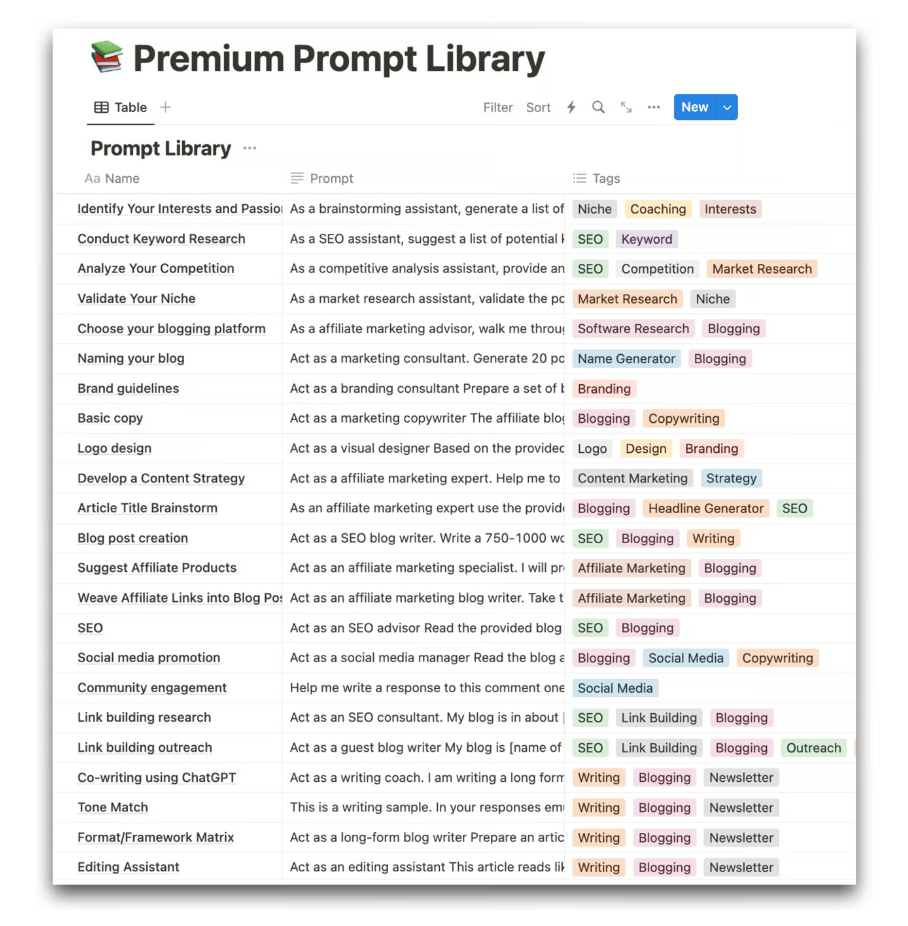Introduction
In this section we’ll tidy up our prompts to make them reusable.
Then I’ll show you how I store my Library prompts and give you a template.
First a word from our sponsor.
Brought to you by Dittto.AI

Fix your hero copy with an AI trained on the best landing pages. Easily generate high-conversion hero copy in a few clicks – for free.
Let’s get started:
Prompt Libraries
In the last Part we looked at using the RISEN framework to make high quality ad hoc prompts.

If you find yourself using the same ad hoc prompts over and over again then I’d recommend adding them to a library.
Before doing this though make sure you have the prompt polished.
There’s no point adding a poorly optimised prompt to a library if you’ll have to tweak it each time you run it!
I’ll show you how I polish a prompt. Then we’ll look at building a Library.

Prompt Polishing
I’ll give you three basic methods I use to polish prompts I use myself and those I give you in my newsletter.
First up, the stress test.
Expose your prompt to lots of different inputs to make sure it continues to perform.
In the last Part we had a blog article generating prompt. To make it work we entered a [topic] each time.
To stress test this prompt we would try it with a whole range of topics. The key is to make sure that the prompt works regardless of the inputs we give it.
If it only works for very specific inputs then it’s not a useful prompt and probably not ready for us to save into a library. The whole point of it being in a library is that it is reusable – so if it works only in very specific situations it’s not worth keeping!
Second, do clean runs.
ChatGPT will remember all the previous instructions and feedback you’ve used in the chat so far.
For this reason it’s important to test your prompts in a new clean chat. This acts as a blank slate so the only information being used is from the prompt.
Having extra context from previous chat allows your prompt to draw on additional information and perform better. We want to see it in action without all that extra information!
Therefore make sure to run your tests in a clean new chat.
Third, ask for improvements. This is a more advanced technique that works wonders.
We’ll use a ChatGPT prompt to improve our ChatGPT prompts. Genius huh?
Here’s a prompt:
Below is a prompt I am working on
Suggest 5 specific improvements that will make the output of this prompt better
Do not give general recommendations but highlight specific parts and provide a rewrite
The prompt follows:
[copy/paste prompt]Let’s run is using the prompt from the last Part. Here it is again for reference:
Act as an SEO blog author and write a blog article on [topic]
Follow these steps:
1. Start with a hook sentence.
2. Provide 3 paragraphs with 3 main points.
3. Close the blog article with a call to action to subscribe to the newsletter.
Desired result:
1. SEO optimised article for this keyword: [keyword]
2. Optimised for time on page - don't reveal the most exciting point until the end of the article.
3. Brand building - focus on displaying thought leadership. Provide a controversial take and back up the argument with references.
Constraints:
1. Keep the blog article between 750-1000 words
2. Use professional but human language. Avoid verboseness and floral language.
3. Do not mention competitors ABC and XYZ. When run with the improvement prompt we get suggestions like so:

Review and implement the improvements manually or just ask ChatGPT to apply the suggested changes.
Then, and this is important, test the output of this new version of your prompt against how it was before! Don’t just assume it’s better but make sure to test.
Building a Library
Once you are happy with the final form of your prompt let’s save it in a library.
You’re library can be as simple as a Word/Excel document.
The main thing is having a place to keep your prompts that is:
- Easy to copy/paste
- Easy to find specific prompts
That’s sort of it. If an Excel works for you: great.
I personally have mine in Notion like this:

If you are a Premium Subscriber you have access to this.
If you want to use Notion I’d recommend something similar. Keep it simple:
- name of prompt
- the prompt
- a tag
The tags allow you to categorise prompts which is helpful when your library grows.
What the tags are depend on what your prompts are for. Mine are digital marketing related and so I use blogging, newsletter, content marketing, SEO etc.
If you are building a customer service prompt library maybe your tags would be complaints, feedback request, review request, technical support etc.
Use whatever helps you sort and find your prompts. And keep the library system simple – don’t overcomplicate it!
